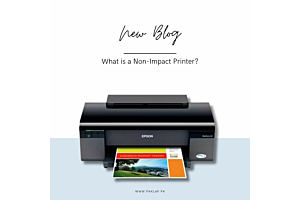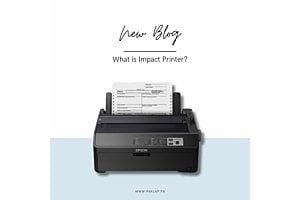Everything you need to consider before buying a smartphone
How you use your smartphone will, at the end of the day, determine what kind of a smartphone you need. When buying a smartphone, you do visibly see your wants and your needs go head to head. Your budget is the third fighter in the match, making it an exciting triple-threat match (shoutout to all WWE fans).
Before you search for potential smartphones or walk into a store, you need to set your priorities straight. What are you going to use your smartphone for, primarily? How do you want it to look and feel? What apps will you use? What is your purpose behind buying a smartphone? Is it your first smartphone? There are many questions you should be asking yourself before you even consider buying one, and your answers to those questions will dictate which route you take in choosing one, and what you eventually end up buying.
Android vs iOS
Different operating systems shower different perks into your life. They also have their own pitfalls which, sometimes, can start to bug you. Considering an operating system is the life and soul of a smartphone, choosing the correct one is the first step you need to take to filter out your options.
iPhones are much simpler to use than Android phones. iOS provides you an array of apps screened for security, being held to Apple’s standards of being an almost unhackable phone. This is one of Apple’s greatest selling points, state-of-the-art security in your palm. If you already own other Apple devices, like an iPad, a MacBook, or an Apple Watch, consider treating yourself to an iPhone.
Apple’s cloud ecosystem is undeniably the smoothest, allowing instant synchronization between devices so you have all your data in one place, easily accessible from multiple devices linked to your iCloud. A downside to iPhones is that they are pricey, and don’t offer as wide of a range of options across different price brackets like Androids do.
With Android, you will find a plethora of options. Different manufacturers offer different specs, different design elements, across a ladder of price ranges.
This is probably why Android dominates worldwide smartphone sales. Android is also open-source software, which means you can fiddle around with launchers and widgets to truly make your user experience your own. A bummer with Android’s operating software updates is that they take months to roll out to your device after being launched by Google. iOS updates are instant, as they go directly from the source to your phone.
Screen size and ergonomics
Smartphones seem to grow larger and larger every year. With this increase in size, you might give up some points in terms of comfort and usability. Not only are larger screen sizes less portable, but they are also harder to use with one hand.
All parts of the screen should be within reach using one hand, so you don’t end up making compromises in the usability and comfort department. Everyone’s hand size is different, so you should do your research and see what works best for you.
A perk with larger screen real estate is literally larger screen real estate. You have more screen to do what you want with it. Streaming movies and shows are more pleasurable. Playing games is more engaging.
Document editing and all work-related tasks that need to be performed on-the-go are less strenuous and frustrating.
Based on what you want to do with your smartphone, and the specs you are looking for, choosing between a small screen (less than 5 inches), a medium screen (5 to 5.5 inches), or a large screen (greater than 5.5 inches) is a decision you will have to make.
Design
You can’t justify what makes the design of a smartphone good or bad, it’s all very subjective and differs from person to person. Cheaper smartphones sport plastic bodies, which are good as they tend to withstand drops better without cracking, and are more resistant to smudges and scratches.
A glass back would give you the added benefit of wireless charging, but you should double-check to see if that smartphone offers that feature or not. In terms of durability, going for a phone with an IP65 or IP67 rating is the way to go, as phones with these ratings are water and dust-proof. IP67 phones can survive being submerged in 3 feet of water for up to 30 minutes, so you won’t have to worry about using it in the rain, or if you’re feeling like it, using it in the shower.
Camera
Gone are the days where people carry around separate cameras unless you’re a professional photographer. Some photographers these days are using their smartphones to capture crisp, jaw-dropping photos. This is a testament to how far smartphone cameras have come since their advent back in the day. Don’t choose a camera based on megapixels.
Look at the aperture, speed, and other features such as 4K video recording, optical image stabilization, and manual modes. iPhones have been popular for their stunning camera quality, and do offer the latest and greatest camera tech for someone who loves looking at life through the lens of their camera.
Android phones aren’t far behind, with the new Google Pixels and Samsung Galaxy S line and Note lines offering sharp cameras with a variety of features for you to play around with. Do your research to see what each manufacturer has to offer and decide based on what you’re looking for from the camera on your smartphone.
Internal storage
Considering most new OS updates are a couple of GB, minimum smartphone storage of 32GB is what we would recommend. If you like taking photos and videos, and playing games on your phone, consider a smartphone that offers 64GB of internal memory.
Some Android smartphones offer expandable storage via MicroSD cards, which can expand your memory up to 256GB and sometimes even 512GB, even though that much storage may be excessive and sometimes unnecessary. The more, the merrier!
Battery life
The battery life of your smartphone depends on many factors. Do you use WiFi or use cellular data like 3G or 4G most of the time? Cellular data drains your smartphone’s battery quicker than using WiFi.
While considering battery life, look at the mAh (milliamp hours) that is provided by the manufacturer. This statistic acts as the baseline towards how long you can expect your battery to last.
There are multiple aspects of a smartphone you need to consider before buying one. Research is key. Knowing what you want from your smartphone will help you shortlist the best potential purchases within your relevant price range.
Considering a smartphone is more than just a device you use to call your friends and family, think wisely before you buy one.





